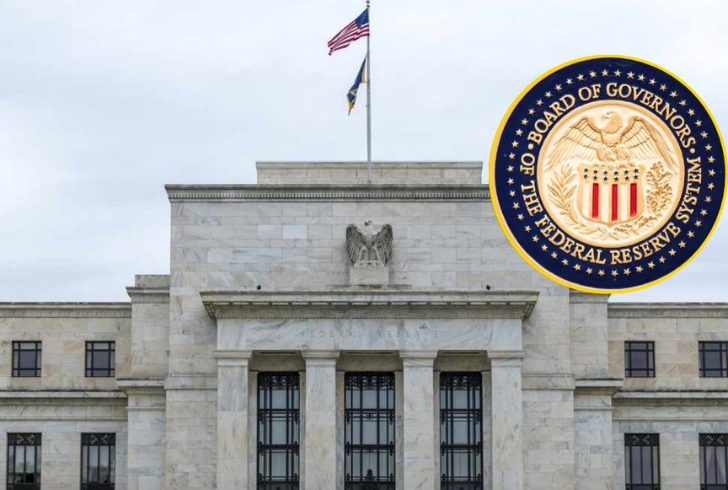Homebuyers are facing a double challenge this spring: record-high home prices and rising mortgage rates. The average interest rate on a 30-year fixed-rate mortgage hit 7.39% in May, according to Bankrate's survey. This marks the third consecutive month rates have stayed above 7%. When will mortgage rates go down?
Inflation Throws a Wrench in Rate Cuts
The culprit behind these high rates? Inflation. It's stuck above the Federal Reserve's target, reaching 3.5% in March. This has led many to believe the Fed will delay, or even forego, interest rate cuts anticipated for 2024. The central bank left rates unchanged at its latest meeting in early May.

Image by tania.kitura on freepik | The Fed might postpone or skip interest rate cuts expected in 2024.
Adding to the complexity is a slowing economy. The unemployment rate held steady at 3.98% in March, while economic growth sputtered to 1.6% in the first quarter of 2024. These factors have made the Fed hesitant to act, causing investors to drive up yields on 10-year Treasury bonds, which influence 30-year fixed mortgage rates.
No Relief in Sight for May
As the peak real estate season kicks off in May, forecasters aren't optimistic about a sudden drop in mortgage rates. "The winds are blowing against potential borrowers," says Greg McBride, chief financial analyst at Bankrate. "Rates have spiked due to high inflation, the Fed's wait-and-see approach on rate cuts, and a rise in government debt issuance. Expect mortgage rates to stay well above 7% in May, with a potential push towards 8% if inflation continues to disappoint."
The last time mortgage rates reached 8% was in October 2023. At that rate, with the current median home price hovering around $393,500, a borrower with a 3% down payment would face a monthly payment roughly $250 higher compared to a 7% loan.
The Federal Reserve doesn't set mortgage rates, but its decisions have a significant ripple effect, explains Robert Frick, corporate economist at Navy Federal Credit Union. "We shouldn't expect any immediate relief from current high mortgage rates," Frick says. "The root cause is inflation, which remains high. This means the Fed is unlikely to cut rates anytime soon, and those cuts would impact the mortgage market."

healthandwealthleague | Instagram | The Federal Reserve doesn't directly control mortgage rates, yet its choices create far-reaching impacts.
The Fed's delay has disrupted forecasts made earlier in 2024, which predicted rates dipping below 6%. "The early predictions for aggressive Fed rate cuts this year are unlikely to materialize," says Selma Hepp, chief economist at CoreLogic. "With a growing economy, the Fed is likely to keep rates higher for longer. The best we can hope for now is rate cuts towards the end of the year, bringing mortgage rates down to the mid-6% range."
"We need to see a series of positive inflation reports before we can expect mortgage rates to fall below 7%," echoes McBride.
Current Trends and Predictions
The average 30-year fixed mortgage rate stood at 7.39% in May, according to Bankrate. While a welcome decrease from the 8.01% peak in October 2023, it's still higher than the sub-7% rates seen in January.
When will mortgage rates go down? Forecasters predict a gradual decline in mortgage rates, but not as dramatic as before anticipated.

Image by EyeEM on freepik | While lower than the peak in October 2023, it still exceeds the rates seen in January.
McBride expected rates to fall to 5.75% by late 2024. But, the new economic reality suggests they'll likely hover between 6.25% and 6.4% by year-end. Mortgage giant Fannie Mae also adjusted its outlook, raising its forecast for 30-year fixed rates to 6.4% by December 2024, compared to their earlier prediction of 5.8%.
"Many of us forecasted rates to be around 6% by the end of 2023," admits Lisa Sturtevant, chief economist at Bright MLS, a large listing service. "Needless to say, those predictions were off the mark."
One unexpected factor is the wide gap between mortgage rates and 10-year Treasury yields. , This gap is around 1.8 percentage points. This year, but, the spread has ballooned to 2.8 percentage points, pushing mortgage rates a full percentage point higher than the 10-year benchmark suggests.
"There's room for this gap to narrow," says Sturtevant. "But it's uncertain if we'll return to pre-pandemic levels. The post-pandemic economic landscape is rewriting the rules. Investors have a different risk tolerance now compared to before.







